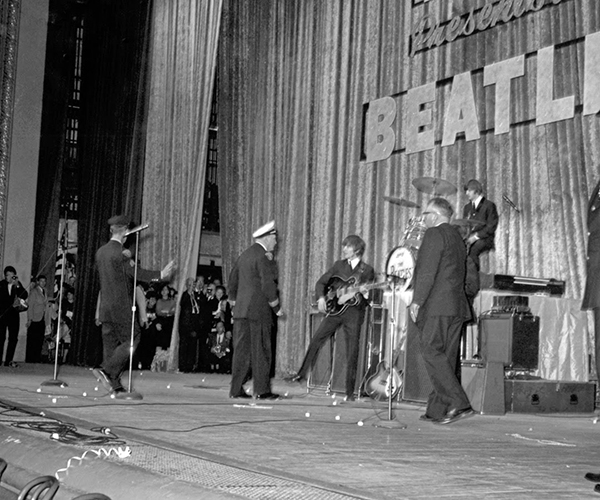The Zero-G plane is a gutted 727 with padded walls and 38 cramped seats in the back. During the flight, the plane weaves up and down in arcs called parabolas, allowing fliers to experience the shift from extra gravity to less gravity in 30-second bursts. How extra-heavy or extra-light one feels depends on the shape of the arc the plane makes.
We leave from Burke Lakefront Airport, and after a short flight to the airspace over Lake Ontario — Lake Erie has too much air traffic to get 100 miles of open sky from the FAA — the Zero-G crew instructs us to unbuckle our seat belts and shuffle to the middle of the plane.
As we get settled, the flight attendant announces through a bullhorn that the plane will soon dip into its first parabola and we’ll feel nearly twice our weight. I am lying on my back, staring at a bolt on the ceiling, hoping to avoid any feelings of motion sickness. The pressure first builds on my chest. It’s like going around Dead Man’s Curve a bit too fast. Then it feels like a third-grader has plopped down on my ribs. Eventually, I feel even the skin on my face reaching for the ground.
And then in an instant, there is nothing holding me down.
I try to stand up, and I launch into the air, hitting my head on the ceiling. This first pass simulates Martian gravity — we effectively weigh one-third of our total weight. It is awkward. I can’t keep my balance, and when in the air, my toes reach for the ground. The bullhorn squawks, “Feet down!” And we all collapse to the ground.
Lying back on the ground, I try to absorb what I’ve just felt, but there isn’t time. The pressure builds again, and soon I am floating. This time it is lunar gravity. I take a short stroll, imagining that I’m the astronaut on the MTV commercials.
Later, during the first moments of zero gravity, a chorus of laughing breaks out. There can’t be anyone on this flight under 25 — some are north of retirement age — and we’re all giggling with stupid grins on our faces. I flip around in circles and push off the wall. The crew tells us it might feel like swimming, and while the comparison makes sense, it’s nothing like water. There’s no resistance. It’s more like a dream.
As we wait for the next round of zero gravity, our team leader doles out M&Ms. He walks effortlessly in the increased gravity — the same conditions we were warned not to even sit in because it is so difficult. I strain to reach out my hand to accept the candies.
As we float up once again, I hold one of the M&Ms in front of my face and let go. It hangs suspended in the air. I chomp down. I toss one ahead of me and go after it like Pac-Man. I taste the chocolate just before my face smashes into the padded wall.
I do avoid the ills that give the “Vomit Comet” its nickname, though some aren’t so lucky. (We have a two-bagger on our flight.) When we land, the Zero-G crew lets us flip our name tags right side up. Rookies must wear them upside down until they’ve completed their first flight.
All told, I experienced six minutes or so of weightlessness, which is about what Alan Shepard experienced in our nation’s first suborbital flight in 1961. I wasn’t around during all those awesome firsts for the space program. But to live in a time in which a guy like me can float weightless around an airplane cabin without any training? This is progress.



